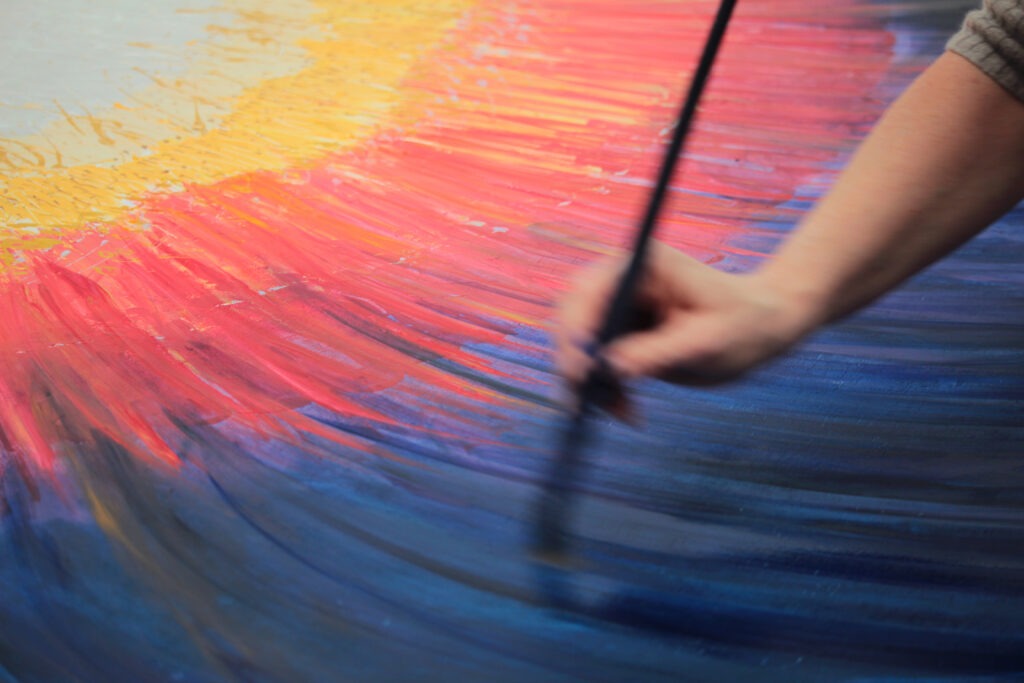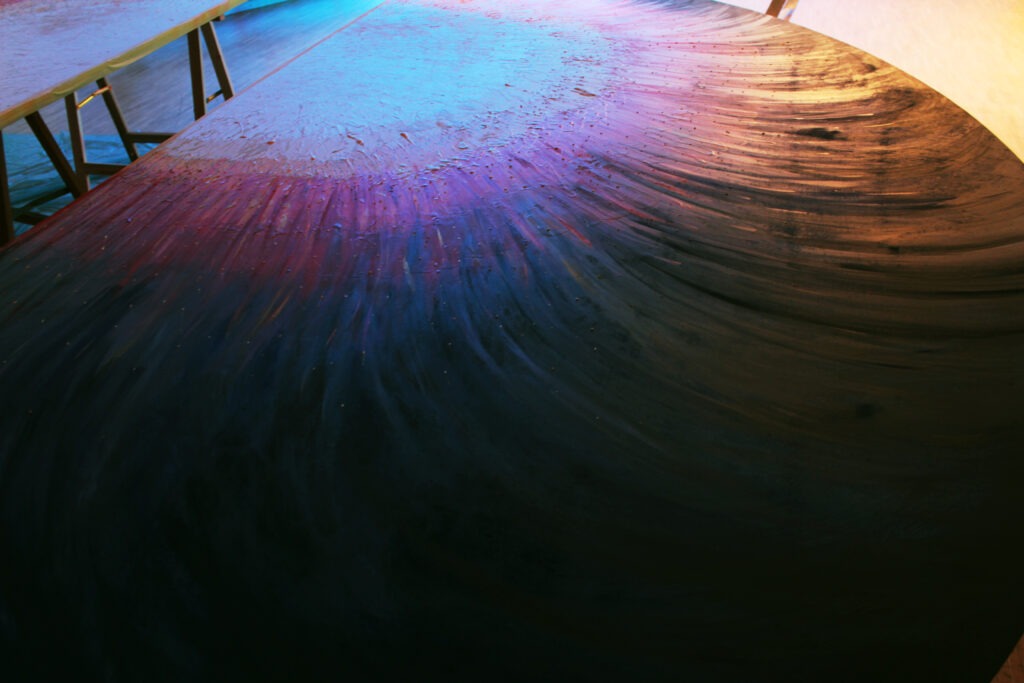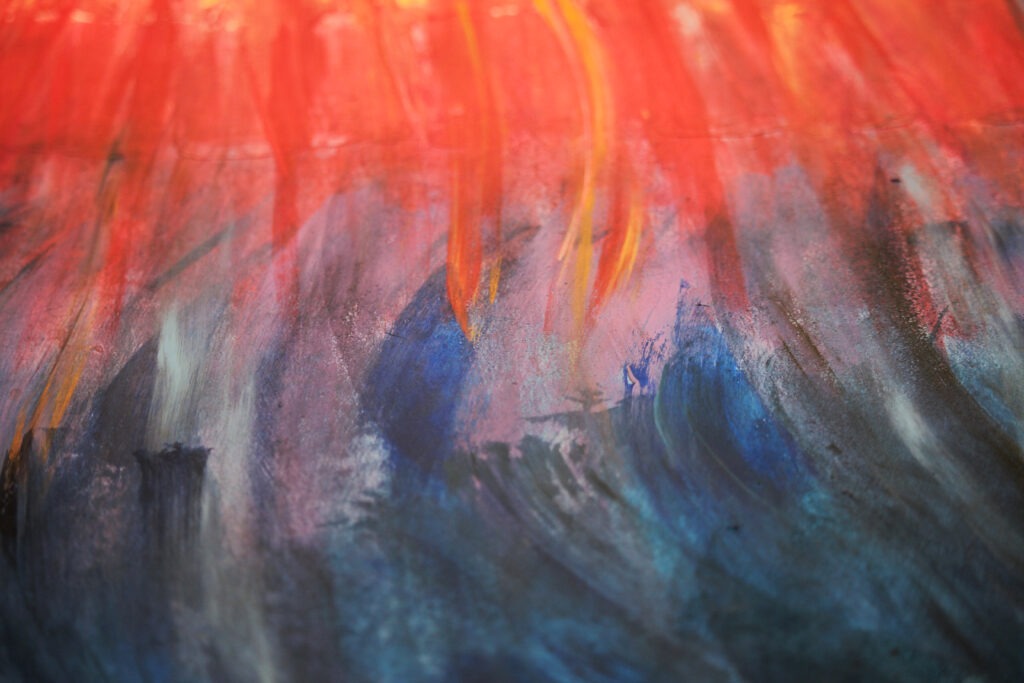Translations by Deepl.PRO and Grammarly
This quote by Robert Henry – The Art Spirit – strongly emphasises the artist’s responsibility and the commitment assumed by Objective Art.
It is no longer a random or accidental art but a causal one.
Inserting a quid of thought and feeling in the creative gesture requires staying hours and hours “on the piece” without diverting intention and attention; this mode provokes, creates, and inoculates the substance in the work. Yves Klein, would you say immaterial sensitivity…
I spent 33 hours, divided into four days and two years of training, learning to keep the “focus.”
Recent research has revealed a disturbing trend—the prevalence of technology has led to a surge in mass distraction. This has significantly reduced the average attention span to a mere 8 seconds. Such a short concentration time is insufficient to create a lasting, objective imprint.
Contemporary art exalts the license of the user to understand what pleases him in artistic admiration, and indeed, there is nothing wrong with free interpretation. However, the perceptual approach should lead to a neutral experience, not a mechanical replication of the observer’s microcosm.
The question is not looking at oneself, the eye, and its associates, but rather the interruption of the interpretation of seeing, that is, preconception, prejudice, and unconditional reflection.



Sensitive is the clear light between the fallacious appearances…Like a thunderbolt… is the title of the Performance | Experiment. Seven appointments with the public were held from 14 to 16 February 2020 at the Cultural Center Museum Elisarion, Switzerland.
Living Fulcrum is the work created to test the public’s objective vision. It is a 3-meter-diameter painting with a light insert (LED) made site-specific in the Elisarion Museum four days before the experiment. It took 33 hours of focused painting to impregnate the work, but the actual “work” took place in the previous two years to train for this effort.
The project was born alongside the dancer Giovanna Galimberti – eurythmy – and the gentle voice “a cappella” by Nadia Radici, thanks to which the atmosphere necessary for the objective art experiment was created.
The experiment is inspired by the teachings of the Armenian master George Ivanovic Gurdjieff, specifically an excerpt from the text Fragments of an Unknown Teaching, written by Petr D. Uspensky, a pupil of Gurdjieff:
Gurdjieff – […] Everything you know, what you call art, is subjective art, which I refuse to call art because I attribute this name only to objective art. The difference between accurate art and personal art is that, in the first case, the artist creates, does what he intends to do, and introduces the ideas and feelings he wants into his work. The action of his work on people is exact; they will receive, of course, each according to his level, the same ideas and feelings that the artist wanted to convey to them.
When it comes to objective art, there can be nothing accidental, neither in the creation of the work itself nor in the impressions it elicits. When it comes to subjective art, everything is random.
The artist, I repeat, does not create; in him, ‘something is created by itself.’ This means that such an artist is at the mercy of ideas, thoughts, and moods that he does not understand and has no control over.
Doesn’t art risk disappearing by becoming so precise? One of us asked.
And is there not an inevitable imprecision, an indeterminate one, that distinguishes art from so-called science? If this impression disappeared and the artist stopped ignoring what he wanted to achieve and knew a priori the impression his work would produce on the public, then it would be a book… no more than art.
Gurdjieff – I don’t know what you are talking about; we use different measures: I evaluate art from its consciousness; you appreciate it as much as it is unconscious. We cannot understand each other.
An objective work of art must be a book, as you call it; the only difference is that the artist does not transmit his ideas directly with words, signs, or hieroglyphs but through certain feelings that he consciously and systematically arouses, knowing what he does and why he does it.
CONCEPT OF THE WORK
I want to delve into the Living Fulcrum, into the creative process of existence, at the point or vortex where the idea becomes form, where the cell makes its heartbeat, where the probability wave collapses into a particle, where life is always and only life, unopposed.
QUESTION FOR THE PUBLIC
How do you feel in the heart of life, the eternal pulsation of becoming, and the living fulcrum where everything is informed…What do you prove?
To answer the question objectively, Mya Lurgo accompanied the audience in a respiratory exercise to temporarily interrupt the attitude to judge, compare, and catalogue. This practice was received with the technique of meditative writing. It consisted of seven circular intensive breaths: inspiration and exhalation without pauses. During the exhalation, with closed eyes, the Audience imagines to touch the work with his hands. In summary:
“I inhale and look at the work, bringing the image inside me;
I exhale, close my eyes, and imagine touching the work with my hands.”
The exercise, which lasted a few minutes, is far from a traditional meditation. Indeed, it is a tool to bypass—like a thunderbolt—the false appearances that obfuscate the objectivity of perception, inducing clear light in most of the audience.
After this group breathing, everyone filled out the questionnaire, leaving, in addition, their own opinions.
After a few minutes, the questionnaires were withdrawn. Finally, Mya Lurgo declared to the public the primary emotion she experienced in the 33 hours of painting, divided into four days. Immediately after, she read aloud the answers—anonymous—to the Public to ensure accurate and real-time feedback.
“At the beginning, I felt intense vertigo, wonder, and exaltation that I could define as joy, and then I was completely enveloped by a deep sense of inner peace and relief. However, having to indicate an emotion among those listed in the questionnaire and recognised by contemporary psychology, calm is what I most experienced in the hours of painting.
Therefore, calm is the emotion that, objectively, should greet the Living Fulcrum audience observing the work.
Next, the experiment’s result reports the audience’s primary and secondary emotions.
“[…] And the action of his work on people is exact; they will receive, of course, each according to their level, the same ideas and the same feelings that the artist wanted them to convey” – Gurdjieff
Beauty is no longer the prerogative of the observer’s eye but a predetermined will by the artist, who is pressing to reach the destination. Gurdjieff is right!
The limit of this experiment, however successful, is given by the choice of words to express one’s emotion.
Personal comments from the public are available in the catalogue to request from myalurgo@gmail.com
As the Austrian philosopher Ludwig Wittgenstein famously said, ‘the limits of my language mean the limits of my world’. This is not just a philosophical statement but a profound truth. When we lack a word to express a concept, we cannot even formulate it.
Language doesn’t just influence our thoughts; it shapes them. It conditions our perception of the outside world within the boundaries of our language.
In the catalogue, you can also view the “behind the scenes” report of the teachers of Aura Reading, Anna di Natale, and Roberto Mantovani: an experiment in the experiment!